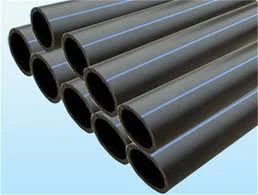Eki . 31, 2024 01:50 Back to list
hdpe duct pipe
Understanding HDPE Duct Pipe A Comprehensive Overview
High-Density Polyethylene (HDPE) duct pipes have gained significant traction in various industries due to their durability, flexibility, and resistance to harsh environmental conditions. These pipes are predominantly used for telecommunications, electrical conduits, and drainage systems, providing effective solutions for both above-ground and underground installations.
What is HDPE?
HDPE is a type of plastic that is characterized by its high strength-to-density ratio. It is made from petrochemicals and is known for its high-impact resistance and toughness. Due to these properties, HDPE is a preferred material for many engineering applications, particularly where pipeline integrity and longevity are crucial. The manufacturing process involves the polymerization of ethylene, resulting in a material that possesses excellent chemical resistance, reduced risk of biodegradation, and a low coefficient of friction, making it ideal for duct applications.
Applications of HDPE Duct Pipes
1. Telecommunication and Electrical Conduits One of the primary uses of HDPE duct pipes is in the installation of telecommunications and electrical wiring systems. Their smooth inner surfaces minimize friction and enhance the ease of pulling wires through the conduits. Additionally, their flexibility allows for easier installation in tight spaces, making them highly suitable for urban environments.
2. Drainage Systems In civil engineering, HDPE pipes are employed for stormwater and sewage drainage systems. Their resistance to corrosion and ability to withstand high flow rates ensures that drainage systems remain effective over time, without the risk of leaks or failures.
3. Cable Protection HDPE duct pipes serve as protective casings for various cables, safeguarding them from physical damage and environmental factors. This is particularly important in areas prone to extreme weather conditions or where excavation activities are frequent.
hdpe duct pipe

Advantages of HDPE Duct Pipes
- Durability HDPE pipes are resistant to various chemicals, UV light, and abrasion, which means they can last for decades without significant degradation. This longevity reduces the need for frequent replacements, ultimately lowering maintenance costs.
- Flexibility Unlike traditional rigid piping materials, HDPE has a certain degree of flexibility, making it easier to install, especially in challenging locations. This also permits natural soil movement without compromising the integrity of the piping system.
- Lightweight HDPE duct pipes are considerably lighter than their steel or concrete counterparts, making transportation and installation easier and more cost-effective.
- Environmentally Friendly HDPE is recyclable, contributing to sustainability efforts within the industry. The production of HDPE pipes also tends to have a lower carbon footprint compared to other materials, aligning with global efforts to reduce environmental impact.
Conclusion
HDPE duct pipes represent a versatile and innovative material that meets the demands of modern infrastructure projects. With their broad range of applications, substantial advantages in durability and performance, and eco-friendly characteristics, HDPE duct pipes are a vital component in the development of resilient infrastructure systems. As industries continue to evolve and seek sustainable solutions, the popularity of HDPE duct pipes is expected to grow, solidifying their position as a go-to choice for contractors and engineers alike.
-
High-Quality PVC Rigid Sheet (Glossy Surface) for Industrial Use
NewsJul.26,2025
-
High Quality PVC Rigid Sheet (Embossed Surface) for Industrial Use
NewsJul.25,2025
-
High Quality PVC Soft Sheet for Flexible Applications | Durable & Customizable
NewsJul.24,2025
-
High-Quality UPVC Water Supply Pipe for Durable Plumbing Solutions
NewsJul.23,2025
-
High-Quality PVC-M Water Supply Pipe for Reliable Plumbing Solutions
NewsJul.22,2025
-
High-Quality PVC Transparent Pipe with Clear Visibility & Durability
NewsJul.22,2025

